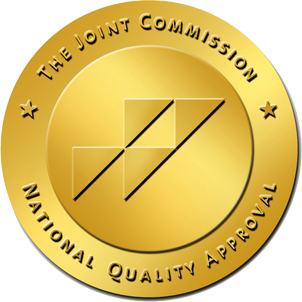
Breathwork or breath work is a practice of controlled breathing used to release stress in the body. It’s often considered a complimentary modality, used to support other therapies and treatments. In addition, treatment and recovery, it’s often used as a means of stress relief and relaxation, giving patients an alternative to stress relief that is not substance based. Unlike many similar alternatives such as meditation and yoga, breath work is also accessible to nearly everyone regardless of development disorders or disabilities. That makes breath work a first choice for doctors looking to recommend a stress reduction tool to patients.Today, more and more addiction treatment centers use breath work to support rehab treatment. In addition, you can often apply breath work outside of treatment, to support relaxation and reducing stress in your everyday life.
That can help you to navigate stressful jobs and to find tools to destress and to relax before bed, after work or commute, or in response to experiencing cravings. Eventually, you’ll want to talk to your therapist about what works for you and how you can apply breath work to your life.
What is Breathwork?
Breathwork is a series of breathing exercises used to produce intentional breathing with the effect usually being of putting full focus on breathing and not on thought patterns and thinking about substances. Breathwork normally breaks down into:
- Controlled breathing – Pursed lip breathing or controlled breathing means disrupting your body’s natural breathing rhythm with a series of controlled breathing patterns. For example, holding your breath, breathing in and out at an uneven pace (e.g., inhale for four seconds, breathe out for 2) and other similar “odd” breathing patterns. These disrupt whatever your body is doing while requiring full focus and attention from you.
- Diaphragmatic breathing – Diaphragmatic breathing requires you to engage the full diaphragm during breathing. This technique is also common in yoga, tai chi, and in meditation. Therefore, it’s often considered a part of those. However, it requires focus and improves stress reduction.
- Circular breathing – Sometimes called “consciously connected breathing” circular breathing is a form of breathing therapy. Here, you visualize your breath as a cycle of breath in and breath out, and later may also attach negative thoughts to that pattern as a means of helping to let those thoughts go.
- Holotropic breathwork – This is a specific form of breathwork that you only get in “holotropic” breathwork therapy. The technique is intended to reduce oxygen to the brain, reducing the patient’s focus outside of the body. This technique should not normally be practiced outside of a clinic.
- Pranayama breathing – Like diaphragmatic breathing and controlled breathing, pranayama breathing normally requires you to breathe in a pattern. This can mean breathing in patterns, breathing through one nostril at a time, alternating breathing and panting, and many other patterns. All of them force the attention away from stress and thoughts and towards the body.
Breathwork forces attention and control directed at the body. It requires actively paying attention and actively doing a thing – because your body will not autopilot it. That means a break from worrying thoughts, it means a break from negative thought patterns, it means the body relaxes, and in some cases, it means improvements in mental health as you give yourself more space to recover. Studies show that breath work can be impactful in reducing stress – especially when combined with therapy and used as a means of creating a break or a point of relaxation.
Get Your Questions Answered
Our expert & caring staff on site are available 24/7. Call us today.
Breathwork as a Complementary Therapy in Addiction Treatment
Breathwork is more and more often used as a complimentary treatment during addiction treatment and other forms of behavioral health therapy. Rather than being a therapy, breathwork is considered a modality. That means it’s a physical agent used to produce therapeutic results. In this case, you normally receive breathing sessions as part of treatment – delivered in between counseling, behavioral therapy, and group therapy. You normally receive other modalities at the same time, such as exercise, nutritional therapy, and a good sleep schedule.

Here, most focus is put on slow-paced breathing practices intended to reduce stress, slow the heart rate, and create a moment of rest. However, not all treatment centers rely on breathwork for stress reduction. Instead, you may have a program that uses breathwork to challenge the cardiovascular system and to create a more robust stress-response system from the basis of a safe environment and breathing.
Complimentary modalities are structured, built around your treatment, and delivered in a clinical environment. Most often, you’ll follow group classes with themes aligned with treatment at the time. However, you may also receive custom and personalized exercises to follow at night before bed or in the morning before you join the class depending on the program and your counselor. In every case, breathwork is an addition to your treatment and will not interrupt substance abuse enough to be a treatment on its own. However, as it can help you to interrupt thought processes and to focus on the body and how you feel instead of on cravings or negative thought patterns, it can be good for your health and your mental health.
Breathwork as a Practice in Recovery
If you’ve graduated from a rehab program, breath work can still be a valuable tool in controlling stress and improving resilience. For many of us, that means seeking out courses, signing up for sessions, and even using apps to guide breath work sessions. Breath work can fit into:
- Wakeup and bedtime rituals to ensure you are relaxed and stress free
- Meditation sessions
- When getting home from work to relax
- In any case where you experience cravings and need to wind down and change your focus
- To help you calm down
- To replace recommended yoga if you are not physically able
- To replace recommended meditation if you feel unable to focus attention in meditation
Breath work is most-often used to reduce stress on your own. If you’d like a form of breathwork to challenge the immune system, to challenge the stress response system, etc., it’s better to do so in a class or clinic – as building unhealthy breathing habits can hurt your health over the long-term.
For stress reduction, it’s a good idea to learn how to do breath work in a class or with your counselor. From there, you can switch to an app like Breathwrk, Prana breath, Othership, Paced Breathing, or others. These offer guidance and guided sessions, which you can follow from the comfort of your home.
Getting Started
Breathwork is a tool that can help you improve your recovery and improve your ability to recover from a substance use disorder. While not a primary treatment, it can help you to relax, to change your focus, and to feel more comfortable in your body. In addition, some types of breathwork can help you to challenge yourself, improve the stress response, and improve your cardiovascular response over time and with a lot of training. At home, breath work is primarily a stress reduction method, which can help you navigate the challenges of work and life without substances. Eventually, it’s a great idea to talk to your doctor about breathwork and to make sure you’re introduced to the practice in a clinical environment where you can learn how to control your breathing safely. Good luck getting treatment.






